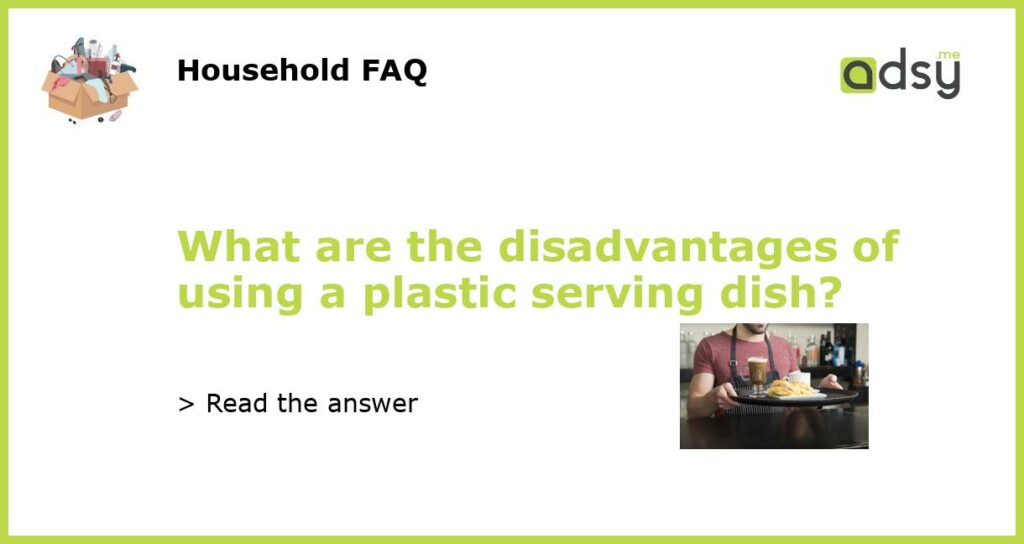Plastic serving dishes are not eco-friendly
Plastic serving dishes are made from synthetic materials such as polyethylene, polypropylene, and polystyrene. These materials are not biodegradable, meaning they do not break down naturally over time. When plastic serving dishes are discarded, they contribute to environmental pollution and can take hundreds of years to decompose.
Additionally, the manufacturing process of plastic serving dishes requires the extraction of oil and natural gas, which are non-renewable resources. This extraction process can lead to habitat destruction, pollution, and greenhouse gas emissions.
Plastic serving dishes can leach harmful chemicals
Plastic serving dishes, especially those made from low-quality plastics, can leach harmful chemicals into food and drinks. These chemicals, such as bisphenol A (BPA) and phthalates, have been linked to various health issues, including hormonal imbalances, developmental problems in children, and increased risk of certain cancers.
When plastic serving dishes are exposed to heat, such as in the microwave or dishwasher, the chances of chemical leaching increase. This means that even if the plastic serving dish is labeled as “food-grade” or “BPA-free,” there is still a risk of chemical contamination.
Plastic serving dishes are prone to scratches and stains
Plastic serving dishes are not as durable as their counterparts made from materials like glass or stainless steel. They are prone to scratches, which can create crevices that are difficult to clean thoroughly. These crevices can harbor bacteria and make it challenging to maintain proper hygiene.
Plastic serving dishes are also susceptible to staining, especially when they come in contact with strongly colored foods or spices. While some plastic serving dishes are marketed as stain-resistant, they are not entirely immune to discoloration.
Plastic serving dishes can warp or melt
Plastic serving dishes are not heat-resistant, and exposure to high temperatures can cause them to warp or melt. This means that they may lose their shape or integrity when used for hot food or placed near heat sources.
Furthermore, plastic serving dishes can become brittle over time, especially when exposed to repeated thermal stress. This brittleness can lead to cracking or breaking, making the serving dish unusable.
Plastic serving dishes may not be suitable for all types of foods
Plastic serving dishes are not suitable for all types of foods, especially those that are hot or acidic. The chemicals in plastic can react with acidic foods, causing them to leach harmful substances into the food. Additionally, hot foods can cause the plastic to release toxins or melt.
Plastic serving dishes are also not recommended for use in the microwave, as they can warp or release harmful chemicals when exposed to high heat. It is crucial to carefully consider the type of food you plan to serve and choose a suitable serving dish accordingly.






